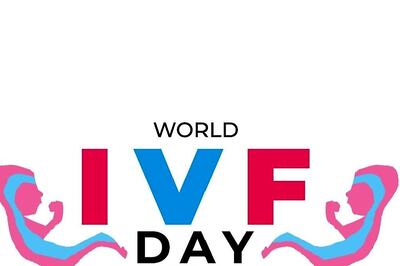
views
WASHINGTON: As U.S. housing starts surged in November to close in on 14-year highs, keeping builders and contractors on the job, consumer spending slumped and in particular the flow of people back to restaurants reversed itself as the coronavirus pandemic intensified.
Construction added 27,000 jobs last month. The food and beverage service industry shed 17,000. Guess which is more on the minds of Federal Reserve policymakers these days?
The service sector accounts for about two-thirds of U.S. economic output. Decimated during the pandemic, it is taking on an even more outsized role in how U.S. officials at the Fed and elsewhere assess the economy’s fitful recovery.
Indeed, as a vaccine brings on the possible end of the health crisis, this may be the first time that tens of billions of dollars in central bank bond purchases get tied to the depth of happy hour bar lines or attendance at baseball games.
The Federal Reserve on Wednesday promised its $120 billion in recession-fighting bond purchases would remain in place each month until there is “substantial further progress” in repairing the U.S. labor market.
Moreover, Fed chair Jerome Powell said it’s the millions of unemployed workers in the food, travel, entertainment and other service industries that are most on his mind.
“Housing, durable sales, vehicle sales – those parts of the economy are performing very, very well,” Powell said. But elsewhere in the economy, the still-spreading coronavirus, is “suppressing activity, particularly activity that involves people getting together in bars and restaurants, on airplanes and hotels and things like that.”
“How big will (the impact) be? We don’t really know … You’re seeing some slowing now.”
The U.S. recovery overall has appeared to be at a standstill since about mid-October: An Oxford http://blog.oxfordeconomics.com/topic/recovery-tracker Economics recovery index hit its highest levels since the start of the pandemic at that point, and has been mostly falling since.
But even that masks the increasing division between industries like housing that have thrived despite the pandemic, and those being smothered by it.
For consumer-facing industries like restaurants, hard hit early in the pandemic but adaptable to outdoor dining and delivery during the summer, the new slump can be seen in government jobs data as well as in high frequency measures of restaurant bookings, and small business employment.
Unemployment claims for the week ending Dec. 12 rose to 885,000, a three-month high and the second weekly jump after a period of mostly steady decline.
That’s coincided with a recent turn down, for example, in measures of seated restaurant dining maintained by OpenTable https://www.opentable.com/state-of-industry, and a stall in levels of foot traffic to retail locations more generally, according to data on cellphone movement provided by Safegraph https://www.safegraph.com/dashboard/covid19-commerce-patterns and Unacast https://www.unacast.com/covid19/covid-19-retail-impact-scoreboard.
The ability of large portions of the economy to rebound fairly quickly last summer surprised Fed officials, with housing and goods production leading the way. The issue now is whether the rest of the country can rise as quickly once a vaccine makes immunity widespread, something Powell said may occur in the second half of 2021.
That increasingly has become a function of how smaller retailers and restaurants navigate the next few months. When unemployment claims began rising again two weeks ago, analysts from Jefferies noted that analysis from state officials was “littered with comments about layoffs in food & accommodative services … until COVID is more under control, claims are going to continue to be elevated.”
It may also leave wide gaps in unemployment rates across race, ethnicity and gender, because some of the worst-hit service industries employ large numbers of women and Hispanics, for example.
Among the sorts of high frequency data series that Fed officials and other have been watching, information provided by Homebase https://joinhomebase.com/data on a sample of small businesses, heavily weighted towards restaurants, has shown employment in decline since early October.
Information on job postings from employment site Indeed https://www.hiringlab.org and analytics firm Chmura http://www.chmuraecon.com/blog, considered leading indicators of hiring plans, have been relatively unchanged in recent weeks – and job growth overall has slowed.
With a vaccine in view, Powell said, the aim of congressional negotiators discussing new unemployment or federal aid schemes should be to assure that families and small businesses stay afloat for the few months still needed for crowds to build again at amusement parks and for buffet lines to no longer be a source of dread.
“We know there are small businesses all over the country … and they’re just hanging on,” Powell said at a press conference this week. “Now that we can kind of see the light at the end of the tunnel, it would be bad to see people losing their business, their life’s work in many cases … because they couldn’t last another few months.”
Disclaimer: This post has been auto-published from an agency feed without any modifications to the text and has not been reviewed by an editor
Read all the Latest News, Breaking News and Coronavirus News here



















Comments
0 comment